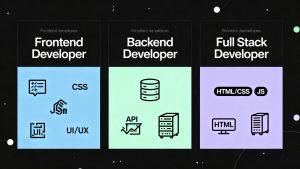Modern organizations are faced with enormous backlogs of infrastructure policy violations, particularly when striving for demanding standards such as HITRUST or FedRAMP. Pulumi, a leading cloud engineering platform, has unveiled its Neo AI agent to help teams automatically identify and resolve these compliance issues at scale, addressing a problem that has long taxed platform engineering and security teams.
From Issue Detection to Automated Remediation
While traditional governance tools are adept at identifying policy violations, the actual process of remediation is often manual, slow, and resource-intensive. For many enterprises, especially those aiming for certifications like HITRUST or FedRAMP, policy violation backlogs can soar past one hundred thousand issues—outpacing what teams can manage by hand.
Pulumi’s Neo AI agent is engineered to bridge the gap between detection and remediation. By interpreting policy violations in context, Neo generates precise Infrastructure as Code (IaC) fixes and applies them automatically, or routes them through customizable approval workflows. This ensures organizations maintain compliance without introducing risk or violating existing policy guardrails.
Advancing Policy as Code with AI
Pulumi’s latest capabilities extend its Policy as Code framework beyond mere prevention, introducing active, automated remediation. Neo now scans every piece of cloud infrastructure, identifies compliance gaps, and produces targeted IaC changes to correct them. Built-in safeguards make certain that even as Neo remediates, all organizational compliance guardrails are strictly enforced within Pulumi’s IaC engine.
Real-World Results: Faster Certification, Less Manual Work
The impact of Neo’s bulk remediation is already being realized. One organization facing more than 30,000 HITRUST compliance violations successfully resolved nearly 20% of those issues in a matter of weeks—work that previously would have consumed an entire year.
Another customer, after allowing auditors direct access to Pulumi’s policy packs, reported dramatically faster evidence collection. By placing controls in code rather than documents or diagrams, they cut their Authority to Operate (ATO) timeline from 18 months to as little as three.
Three-Phase Compliance Workflow
Pulumi Neo AI enables organizations to follow a comprehensive, three-step cycle:
- Audit: Pulumi scans across all cloud providers, including unmanaged resources, benchmarking against leading compliance frameworks such as CIS, NIST, PCI DSS, HITRUST, ISO 27001, and SOC 2.
- Remediate: Bulk assignments let Neo generate pull requests with immediate IaC corrections. Neo can even import resources currently outside code management and remediate them automatically.
- Prevent: Once compliance gaps are closed, policies are fully enforced during deployments, with integration into CI/CD pipelines to automatically block noncompliant changes before production.
Developer-First Compliance Strategy
What sets Pulumi’s approach apart is its deep integration into developer workflows. Policy violations are surfaced within the same platform engineers use daily, eliminating the need for context-switching between tools. By embedding compliance into the development lifecycle, Pulumi helps developers “shift left” on security and catch issues early—significantly reducing friction between security teams and engineers.
Availability Across All Pulumi Cloud Plans
Pulumi’s advanced policy features, including AI-driven audit and remediation via the Neo agent, are now accessible to all Pulumi Cloud customers. Enterprise and Business Critical users receive full access to audit scanning and AI-powered remediation, empowering teams to meet compliance targets with unprecedented speed and efficiency.
Read more such articles from our Newsletter here.



